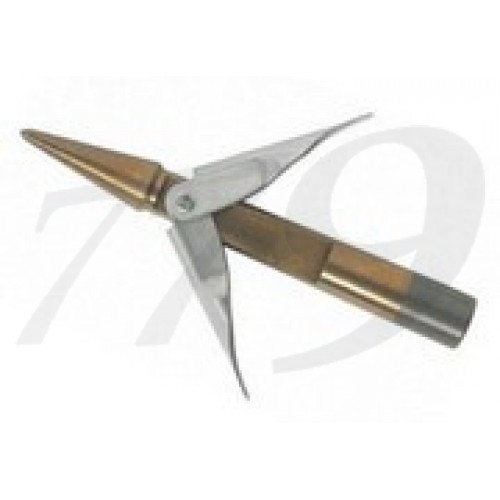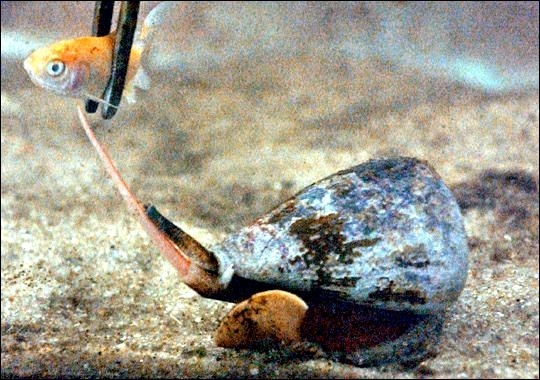


One species, the Geography cone, Conus geographus, is also known colloquially as the "cigarette snail," in the belief that the victim will have only enough time to smoke a cigarette before perishing. About 30 human deaths have been recorded from cone snail envenomation. The "sting" of many of the smaller cone species is no worse than that of a bee or hornet sting, but in the case of a few of the larger tropical species, handling the snail can have tragic consequences. This is not a safe thing to do, because the snail may fire its harpoon in self-defense. The bright colours and patterns of cone snails are attractive to the eye, and therefore people sometimes pick up the live animals and hold them in their hand for a while. Relevance to humans The risk of being stung Some cone snail venoms contain a tetrodotoxin, which is similar to the paralytic neurotoxins found in pufferfish, the blue-ringed octopus, and the Rough-skinned Newt. Some cone snail venoms also contain a pain-reducing toxin, which the snail uses to pacify the victim before immobilising and then killing it. These are various peptides, each targeting a specific nerve channel or receptor. The toxins in these various venoms are called conotoxins. The venom of cone snails contains hundreds of different compounds, and its composition varies widely from one species of cone snail to another.

After the prey is digested, the cone snail will regurgitate any indigestible material such as spines and scales, along with the disposable harpoon. The snail then retracts the radula, drawing the subdued prey into the mouth. The venom paralyzes small fish almost instantly. The harpoon is loaded with venom and, still attached to the radula, is fired from the proboscis into the prey by a powerful muscular contraction. When the snail detects a prey animal nearby, it turns its mouth - a long flexible tube called a proboscis - towards the prey. The harpoon is hollow and barbed, and is attached to the tip of the radula inside the snail's throat. The cone snail's harpoon is a modification of the radula, an organ in molluscs which acts as both tongue and teeth. The venom of a few larger species is powerful enough to kill a human being. Because cone snails are slow-moving, they use a venomous harpoon (called a toxoglossan radula) to capture faster-moving prey such as fish. Some species of cone snails can grow up to 23 cm in length and are found in tropical or subtropical waters.Ĭone snails are carnivorous, generally eating marine worms, small fish, molluscs, and even other cone snails. The shells of cone snails are often brightly colored, and have interesting patterns, although in some species the color patterns may be partially or completely hidden under an opaque layer of periostracum. Subtropical species may be found under rocks in the lower intertidal and shallow subtidal zones. Many tropical cone snails live in or near coral reefs. However, some species are rather adapted to temperate environments, such as the Cape coast of South Africa, and indeed are endemic to these regions. This family is typically found in warm and tropical seas and oceans worldwide. The shells of cone snails are often brightly colored and intricately patterned. The sting of a few of the larger species of tropical cone snails can be fatal to a human being. The live animals, however, should be handled with considerable care, as all of them are capable of "stinging" humans with unpleasant results. These snails hunt and immobilize prey using something resembling a harpoon, which in this case is a modified radular tooth along with a poison gland containing neurotoxins.Ĭone venom shows great promise as a source of new, medically important, substances. The narrow end of the cone shell is the anterior end, and the wide end shows the usually very low spire of the gastropod shell.

The shells of cone snails are shaped like an ice-cream cone. The cone snails or cone shells, sometimes simply known as "cones", (family Conidae), are a taxonomic family of medium-sized to large, sophisticated predatory sea snails, marine gastropod mollusks. Asprella Chelyconus Conus Floraconus Leptoconus


 0 kommentar(er)
0 kommentar(er)
